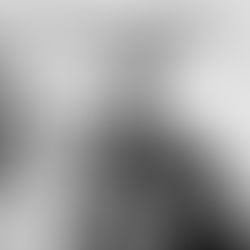John Keats : The Alchemy of Art
- InLibroVeritas

- 20 oct. 2020
- 6 min de lecture
Dernière mise à jour : 7 avr. 2023

John Keats
engraving after J. Severn, 1819
The Alchemy of Art
A Study in the Evolution of the Creative Mind of John Keats
by G.B. Sullivan
"From the time John Keats began Endymion (March 1817) until his abandonment of the second version of Hyperion (September 1819), we have thirty vital months comprising a span of development unparalleled in English literature. This dissertation focuses upon the central feature of that development — the evolution of the creative mind of the poet. (...)
By concentrating on the hero of Endymion I hope to establish the nature of the evolutionary happening by which the unconscious poet of Endymion became the great poet capable of writing Hyperion.
Murry writes,"If we could know the process by which that inward victory was accomplished, a great secret would be ours." Murry is right, and I feel that the solution to Keats' secret lies in the realm of creative transformation and the successive changes within the poet that have left their traces in Endymion to be studied here, and in Hyperion and The Fall of Hyperion treated later.
In these poems we can witness the regeneration of the poet through his art by the heroic pattern this achievement followed. In the most general sense, this study concerns the poet's salvation through his work. It involves tracing in the poetry the process by which the whole man, the totality of the conscious and the unconscious personalities, is created.
That is to say, it is a study of the self creation of Keats, whose own commentary on the writing of Endymion commends this manner of inquiry to us:
"The Genius of Poetry must work out its own salvation in a man: It cannot be matured by law and precept, but by sensation and watchfulness in itself . — That which is creative must create itself —
In Endymion, I leaped headlong into the Sea, and thereby have become better acquainted with the Soundings, the quicksands, and the rocks, than if I had stayed upon the green shore, and piped a silly pipe, and took tea and comfortable advice.
— I was never afraid of failure; for I would sooner fail than not be among the greatest."
(I, 377)
The writing of Endymion was indeed bound up with the young poet’s zeal to grow. It is the beginning of his continual endeavor to allow the realization within himself of what he calls here the "Genius of Poetry".
This Genius must work out its own salvation in a man independently of law and precept, requiring only the sensation and watchfulness, or openness of the creative man to the transpersonal, that is to say he characteristically experiences the eternal presence of the archetypal world. The poet says :
"that which is creative must create itself."
This remark is of paramount importance. It is really the core of this dissertation, because I attempt to show that the creative in Keats, that which creates itself, is his self, his psychic totality as an individual. The salvation of the Genius of Poetry in Keats was, as I see it, the creation of his creative self.
(...)

Hans Thoma - Endymion, 1886
CHAPTER I : PROLOGUE TO ENDYMION
The Idea of a Hero
The discussion of this dissertation is patterned according to the stages of the hero myth: the eternal quest that leads the protagonist along his path of adventures and glorious feats toward the fulfillment of his goal.
Erich Neumann relates the story of the hero to the development of human consciousness. Joseph Campbell is another who has contributed greatly to our understanding of the hero in The Hero with a Thousand Faces (1949) but his findings relate only tangentially to ay dissertation. Primarily, I follow Neumann who shows that the myth of the hero proceeds through a series of stages that represent first the symbolic differentiation of the ego and ultimately symbolize the realization of the self.
The cosmic characteristics of the hero story derived from its similarities to the path of the sun, which stands high at the zenith and then is plunged into deepest night, to rise again in new splendor. The hero's wandering, always a typical characteristic, symbolizes the primordial urge for return to the lost mother, a drama reenacted in the sun's unerring return to the womb of night at the end of every day.
It was Jung who was first to identify the hero with the psychological lifeforce called libido. Because of the hero's connection with psychic energy, his development or progress symbolizes the growth and progress of human personality. In general it can be said that the hero represents consciousness.
Art exteriorizes the goals of the personality which are, first, consciousness of the ego and, second, consciousness of the self. This exteriorization takes the form of the hero myth and is grounded fundamentally upon the heroism of the artist himself. Neumann has distinguished three distinct classes of heroism by which different kinds of individual developments can be classified,
First, there is the extraverted type whose aim is action : he is the founder, leader, and liberator who changes the world he is in.
Second, the introverted type who is the culturebringer, the redeemer and savior who explores the inner values of the world that is in him, thereby discovering the source of knowledge and wisdom, law and faith, revealing their eternal pattern as a work to be accomplished and an example to be followed. The creative act of raising the secret treasure is common to both types of hero, and the prerequisite for this is union with the liberated captive — archetypal motifs repeated again and again in the hero sagas of the world.
The third class of hero, and the most important to the student of the nineteenth century is the centroverted type who does not intend to change the world through his conflict with inside or outside, but seeks instead to transform the personality. Self-transformation is his true and distinguishing aim, and the liberating effect this may have upon the world is only secondary.
While his self-transformation may be held up as a human ideal, the exemplar, the Great Individual, the model of all individual developments, his will is not directed to the collective; for in him centroversion expresses a natural trend of the human psyche, which is operative from the very start and forms the basis not only for self preservation, but of self-formation as well.
The course Keats had decided upon was a heroic one, the long and arduous way to knowledge of the self, the way of the third type of hero who does not seek to change the world, as such, but by going beyond the struggle with inside or outside, to transform the personality. To do some good for the world was really only secondary in Keats' mind. Moneta pronounces at the end of his quest in The Fall of Hyperion :
What benefit canst thou do, or all thy tribe,
To the great world ? Thou art a dreaming thing,
A fever of thyself.
The real subject and purpose of Keats' myth of individuation is the self-transformation
of Keats, who was a « fever of himself ».
(...)
The motifs of "insignificance", exposure, abandonment, and danger are indications of how precarious is the psychic possibility of wholeness and the enormous difficulties to be met with in attaining this highest goal. Endymion frequently expresses his sense of powerlessness and helplessness in the face of the obstacles that keep him from this
attainment :
How long must I remain in jeopardy
Of blank amazements that amaze no more ?
The child hero receives his direction from the outside, chosen by the forces that will
transform him. He is called or Individuation has its own course that the hero perforce
must follow. Soon surrounded by fearsome wonders, Endymion sits for a moment to
collect himself and to think upon his past. Thinking about the past amplifies his sense
of loneliness and this is related to the "child's" abandonment. Since Endymion is
developing towards independence, he must detach himself from his origins. Hence, the abandonment he experiences is a necessary condition of his quest.
In my understanding the meaning of his aloneness is that, as bringer of light or changer of consciousness, Endymion must overcome darkness, which is to say that he must overcome the earlier unconscious state. Higher consciousness is knowledge going beyond what we are conscious of at the moment. This is the equivalent of being all alone in the world. Hence the loneliness of the hero, loneliness expressing the conflict between every bearer of higher consciousness and his surroundings; Endymion’s solitude, then, is symptomatic of the movement toward higher consciousness.
(...)"
* * *
Source :
by G. Brian Sullivan

















